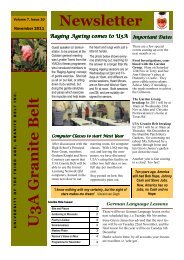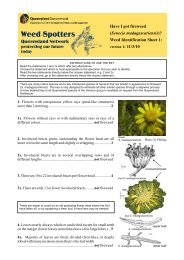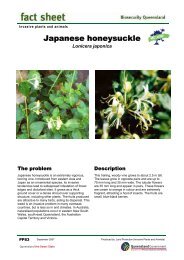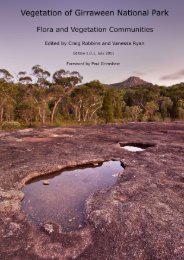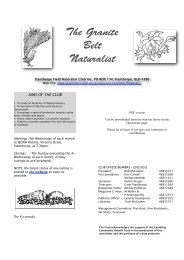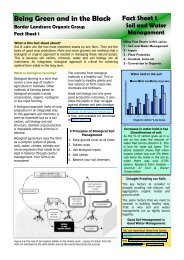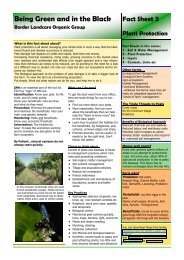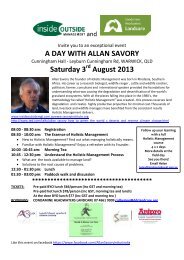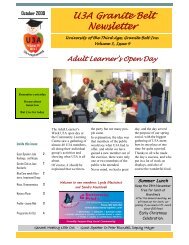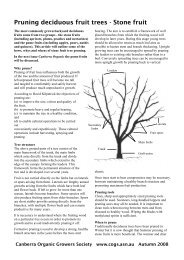Introductory weed management manual - Greening Australia
Introductory weed management manual - Greening Australia
Introductory weed management manual - Greening Australia
Create successful ePaper yourself
Turn your PDF publications into a flip-book with our unique Google optimized e-Paper software.
How to deliver and review your training session<br />
Feedback can be obtained in a number of ways. You might prepare a simple form that has questions about how useful<br />
the presented material was, what participants would like to see added or changed and any other general comments<br />
that participants might like to make. Of course, you can just ask the group at the conclusion of the session the same<br />
questions, although people may be less forthcoming verbally in a group.<br />
It will also be useful to conduct your own self-evaluation of the session and consider how well you think the session<br />
went and what areas may need to be changed.<br />
Asking questions<br />
Questioning is an essential skill for presenters to use. There are lots of reasons for asking questions. These days they<br />
are not used just for testing someone’s knowledge. They could be used:<br />
• to focus attention on a certain topic<br />
• to encourage interest<br />
• to promote activity<br />
• to check on and extend the participant’s understanding<br />
• to slow down or speed up the pace of a training session<br />
• to challenge the participants to think more deeply<br />
• to assess the participants progress.<br />
The questions a presenter asks are either thought up in advance of the session (pre-set) or arise during the session.<br />
There are two types of questions that trainers use during their sessions: 1. closed 2. open.<br />
Closed questions<br />
Closed questions are usually answered with YES or NO or a very short statement. Be careful when you use this type<br />
of question with participants who are a little shy or feel anxious. They may not feel confident to add anything further<br />
to their simple answers and you might never find out the real depth of their thinking. The speed and tone of voice<br />
are very important with these short, closed questions because it is easy for nervous participants to interpret them as<br />
being abrupt or even rude.<br />
Examples:<br />
• Have you used this equipment before?<br />
• Do you know how to conduct a site assessment?<br />
• Do you understand the protocols for <strong>weed</strong> mapping?<br />
Open questions<br />
Open questions cannot be answered with YES or NO. They are used to encourage the participants to give a more<br />
detailed answer usually containing their own feelings or opinions. They are very useful with a new group because<br />
they bring out a wide variety of responses and can get a group discussion started.<br />
Examples:<br />
• What do you know about site assessments for <strong>weed</strong> <strong>management</strong>?<br />
• What are the advantages and disadvantages of using herbicides?<br />
When asking questions<br />
• be brief and clear<br />
• keep it simple<br />
• allow for time for response (silence is okay)<br />
• show honest intentions (no trick questions)<br />
• give praise and encouragement<br />
• avoid sarcasm<br />
• avoid slang, colloquialisms, confusion.<br />
10<br />
CRC for <strong>Australia</strong>n Weed Management • Presentation of information sessions to small groups



